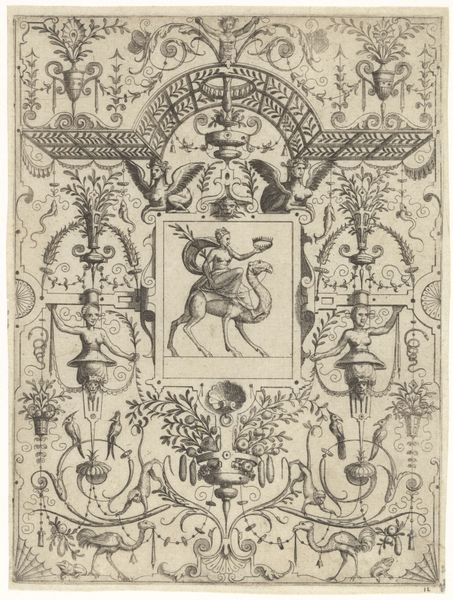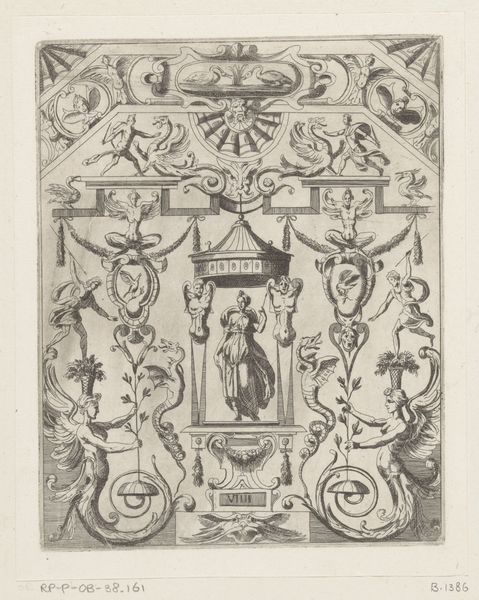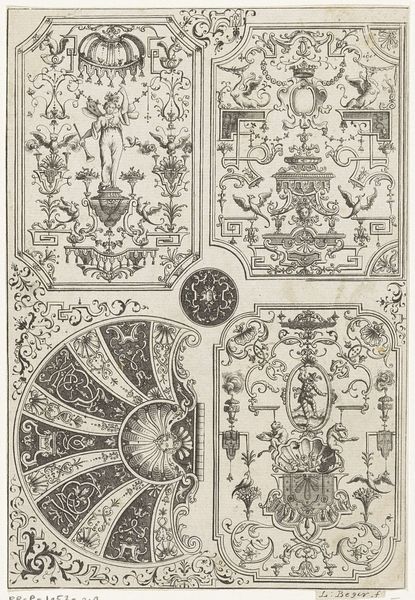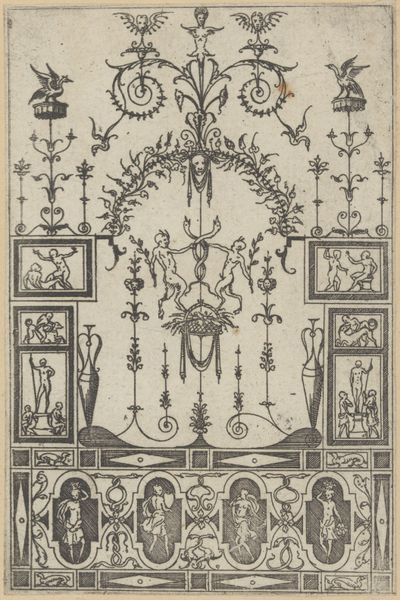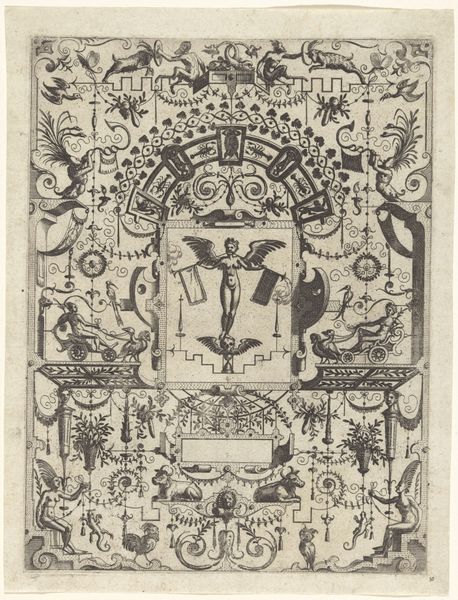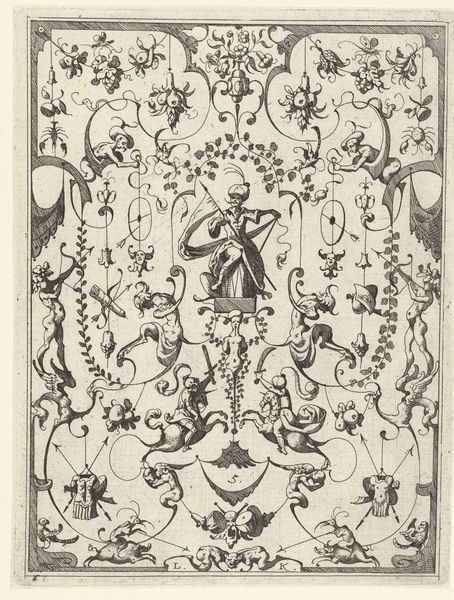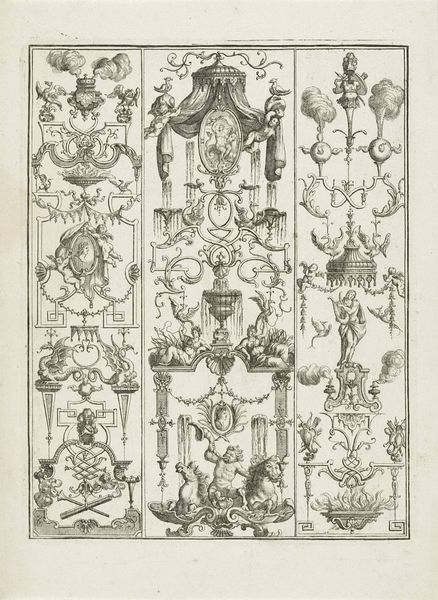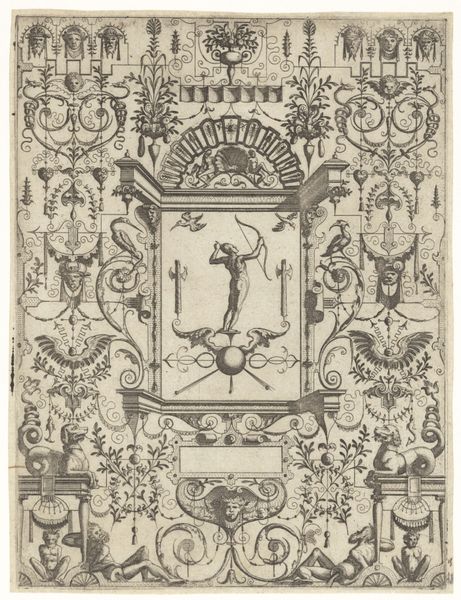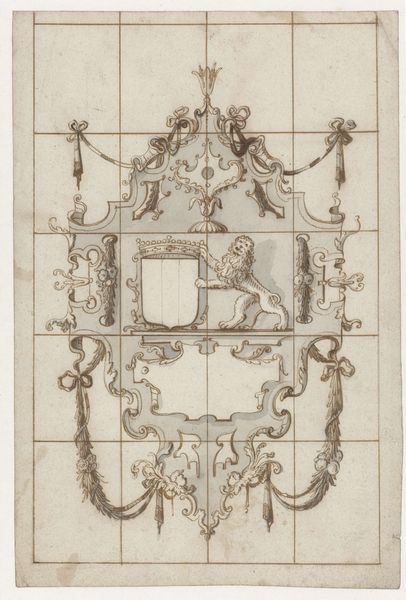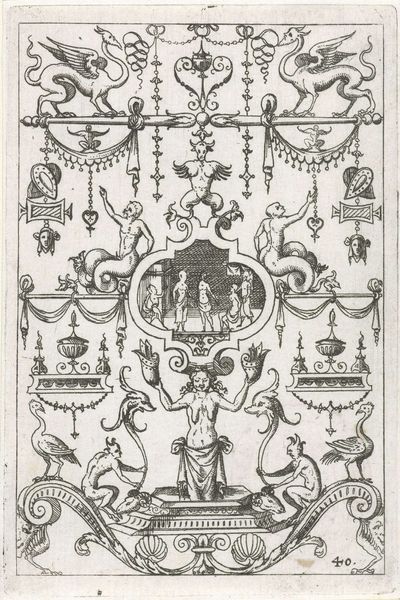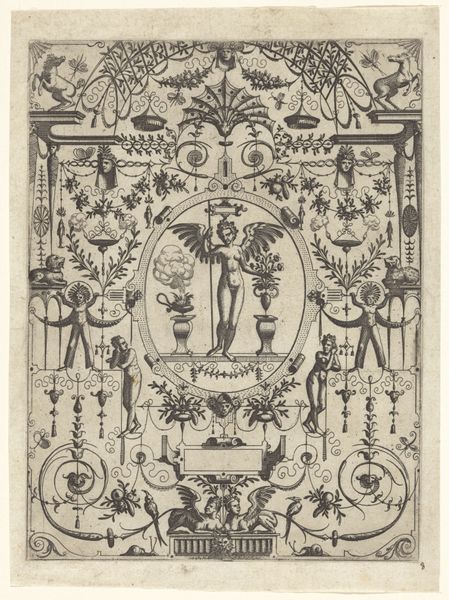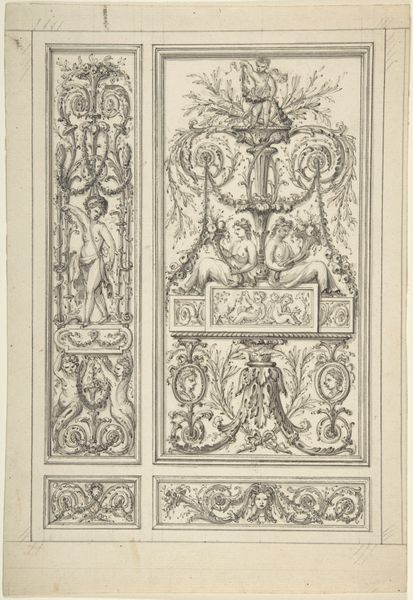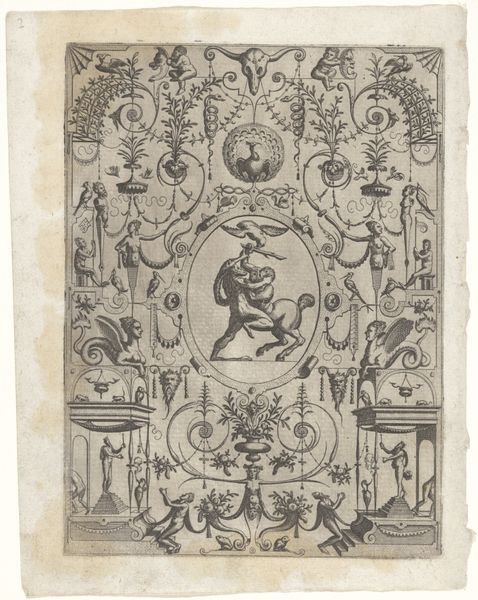
Architectuurfantasie met twee veldheren die elkaar de hand reiken 1565 - 1571
0:00
0:00
print, engraving
#
pen drawing
# print
#
old engraving style
#
ink line art
#
11_renaissance
#
geometric
#
line
#
history-painting
#
engraving
Dimensions: height 208 mm, width 158 mm
Copyright: Rijks Museum: Open Domain
Curator: This engraving, “Architectuurfantasie met twee veldheren die elkaar de hand reiken,” by Johannes or Lucas van Doetechum, was created sometime between 1565 and 1571. The print presents an architectural fantasy featuring two generals shaking hands. It’s held here at the Rijksmuseum. Editor: It’s…oddly unsettling. The meticulous detail is fascinating, yet the overall effect feels sterile, even oppressive. All that ornamentation! Curator: I find that dense ornamentation very interesting. This print highlights a Mannerist fascination with detail and a blurring of boundaries between art, craft, and even industrial design. The production of such a work speaks to the skilled labor of the Doetechum brothers. Editor: True, there’s undeniable technical skill on display. But to what end? The central image of the generals feels staged, like propaganda. I see a negotiation, not genuine peace. The context of 16th-century wars of religion looms large. Curator: It's the layering of allegorical elements that intrigues me – the sphinxes at the base, the draped figures, the bizarre hybrid creatures above. What roles did these symbolic components have in sixteenth-century print culture? The act of consumption also feels highly class-dependent. Who bought it? Who would it impress? Editor: I agree that context is vital. Considering its placement within a culture steeped in power struggles allows for a more complete reading. What did the artist and audience want to express? Perhaps that this piece represents the ephemeral nature of power – all the details look too perfect to be true. The blank rectangle at the bottom only drives this home. A void to be filled with empty platitudes and self-important slogans. Curator: The materials are fascinating here too. It is line engraving. But beyond the art itself, what about paper production in that moment? Its effect on dissemination, accessibility, and the print market? How was its value perceived based on material costs, like ink and paper? Editor: So, this highly ornamented print also demonstrates deep social stratification. From a critical viewpoint, it becomes not just a historical artifact but an emblem of societal values and tensions. It leaves you wondering what a handshake really meant back then. Curator: Indeed. Examining its production helps us to reveal what this artwork could mean for diverse audiences in a different cultural environment than it was initially made in. Editor: Ultimately, what appears ornate at first glance becomes, on closer examination, an artifact loaded with cultural significance and sociopolitical critique.
Comments
No comments
Be the first to comment and join the conversation on the ultimate creative platform.
